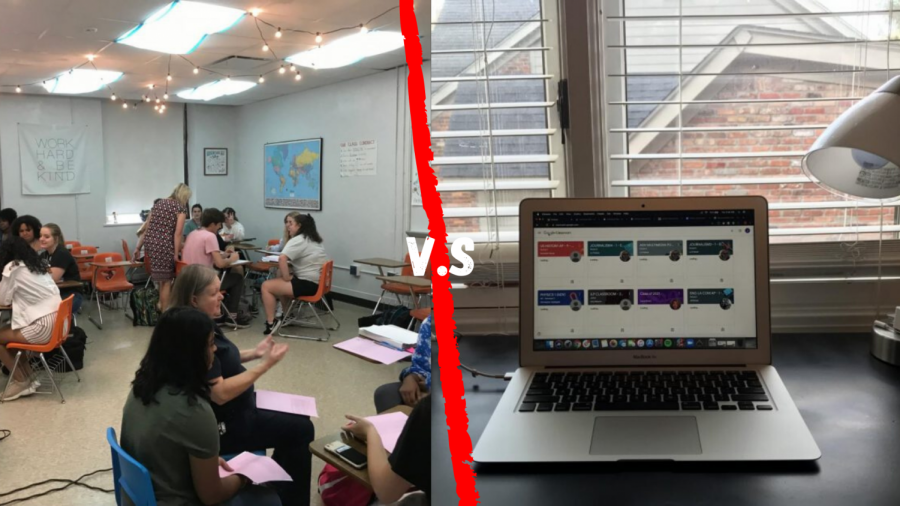Classroom vs. computer
The difference between NTI 2.0 and in school learning.
October 7, 2020
With the school year starting at home, Manual students have had to make adjustments and change what is considered the norm to be successful with NTI 2.0.
Not only has our location changed, but so has our schedule. Class times have been reduced to 80 minutes a week, rather than the 180-270 minutes we’re used to. This is bound to cause difficulties with what students are required to learn within the school year. However, many students benefit from this more flexible schedule as they can choose when to do their work, as long as it’s done by the set deadline.
There are also classes at school that require in-person interactions. “I am a YPAS student, whose art form relies on in-person rehearsal and performance,” Catherine Willis (11) said. YPAS students are restricted to the resources available at home, instead of the amenities at school. They can’t have rehearsals, which takes away part of the full YPAS experience.
While some students work better with NTI’s flexibility, others struggle with the different work environment. “I prefer learning in school opposed to learning at home…being at school sets a better environment for learning,” Emily Githens (10, HSU) replied.
Though students may find their beds or couches more comfortable than the plastic blue chairs at school, many struggle due to distractions at home such as family, phones and the ability to turn off your camera and get distracted during class. Even though students can still choose to not pay attention while in the classroom, when alone at home there is nobody telling them to stop or holding them accountable for their actions.
Apart from the academic portion of school, it’s also a place for students to connect with each other. In school, students are able to interact with classmates and teachers in person, not just through a screen. When a student gets out of a bad class, they are able to go to their friends and have meaningful conversations, not just pixelated voices and encouraging text bubbles.
Some kids, however, struggle with being social with other people and keeping up with trends, so NTI allows them to not have to worry about those things. It also prevents disruptions from other students, or things going on outside the classroom to be an issue, which helps students better focus on their tasks.
At home, learning has also taken away a bunch of first and last high school experiences for freshmen and seniors. Freshmen aren’t able to experience getting lost on their very first day of highschool, being booed at the football homecoming pep rally or meeting their new classmates and developing important friendships. Seniors can’t experience their last pep rally, drive to school in their nicely decorated parking spaces, or hang out with their friends for the last time before they go and start the next chapter of their lives.
NTI does allow for students to have more time to work on their work, and gives them the opportunity to ask other people for opinions, rather than just the person sitting next to you. NTI also gives students who struggle with speaking up during class more resources to contact teachers and peers virtually such as emailing their teachers questions they normally wouldn’t feel comfortable asking in front of the whole class.
NTI and in school learning both have their ups and downs, but in school learning is what students know and are familiar with. In school learning may be difficult at times, but at the end of the day, highschool wouldn’t be as memorable sitting at home on a computer.









